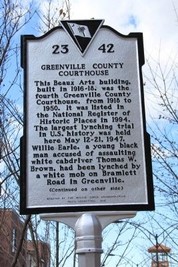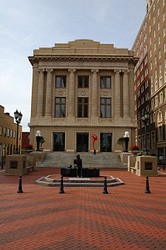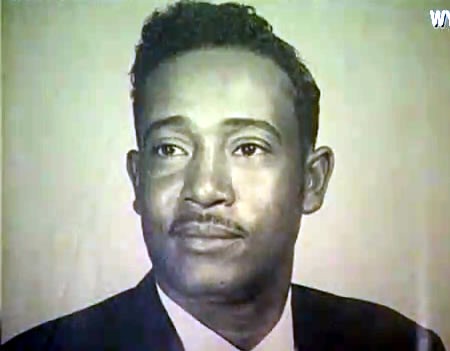Greenville County Courthouse and the Willie Earle Lynching Trial
Introduction
Text-to-speech Audio
Images
Historical marker that tells a brief history of the events detailed above.

Modern picture of the Greenville County Courthouse.

This photo of 24-year-old Willie Earle was taken shortly before he was lynched by white taxi drivers in South Carolina.

Backstory and Context
Text-to-speech Audio
On February 17th, 1947, a mob kidnapped Willie Earle, a Black man who was accused of assault against a white taxi driver. A number of white tax drivers formed a mob and took Earle from his cell preceded to take him to the Greenville County line. Once the mob and Mr. Earle reached their destination, members of the mob took turns beating Earle, stabbing him, and eventually shooting him twice with a shotgun. The mob then drove Bramlett Road in Greenville where they lynched Willie Earle's lifeless body and left the corpse in the tree. There was no secret that local taxi drivers were responsible for Willie’s heinous death, but it is not easy to convict a white man of killing a Black man in the South.
Not long after the lynching the Federal Bureau of Investigation and the United States Marshals were on the scene questioning suspects. Eventually thirty-one men were charged with the murder of young Willie Earle. Some of the men charged with the murder signed confessions admitting that they took part in the mob and implicated those who would not confess to taking part. While it seemed, from the outside, that the African American community would find justice for their fallen brother, something was working in favor of the accused.
After two weeks of trial the prosecution rested and the defense seemed like they had all but lost. However, after only five hours of deliberation and consideration the all white jury had reached their verdict. The jury had found that all thirty-one men, regardless of prior confessions, were not guilty on all counts.
